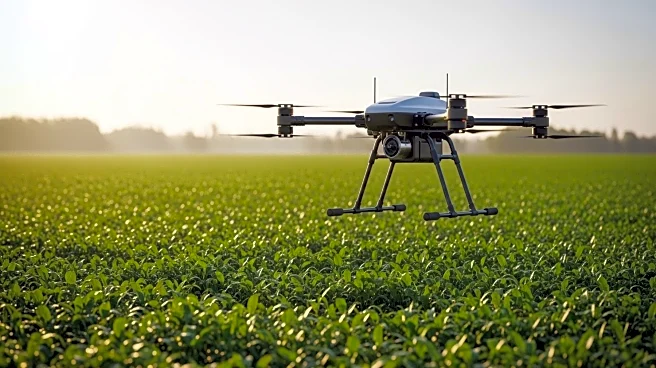What's Happening?
Tom Cotter, a farmer in southern Minnesota, has significantly expanded his sunflower production to 270 acres, with 150 acres dedicated to conventional farming and 120 acres to organic farming. The sunflowers are supplied to companies like Seven Sundays and Simple Mills, which use them in breakfast food products available nationwide. Cotter's decision to grow sunflowers was influenced by the rising market demand, partly due to the war in Ukraine, which increased sunflower prices. Additionally, Cotter's farming practices emphasize regenerative agriculture, which includes diverse crop rotations and cattle grazing, contributing to improved soil health. The farm also hosts field days to educate the public on healthy food and regenerative agriculture, drawing visitors to the blooming sunflower fields.
Why It's Important?
The expansion of sunflower production by farmers like Cotter highlights a shift towards regenerative agriculture, which can lead to more sustainable farming practices and improved soil health. This shift is significant as it aligns with growing consumer demand for organic and sustainably produced food products. The involvement of companies like Seven Sundays and Simple Mills indicates a market trend towards incorporating such ingredients in mainstream food products, potentially influencing other food manufacturers. Furthermore, the educational field days foster a connection between consumers and the agricultural process, promoting awareness of sustainable practices and healthy eating.
What's Next?
As sunflower production continues to grow in Minnesota, more farmers may adopt similar practices, especially if market demand remains strong. The success of Cotter's farm could inspire other farmers to explore regenerative agriculture, potentially leading to broader changes in farming practices across the region. Additionally, the ongoing interest in sustainable and organic products may encourage more companies to source ingredients from farms practicing regenerative agriculture, further driving demand for such crops.













